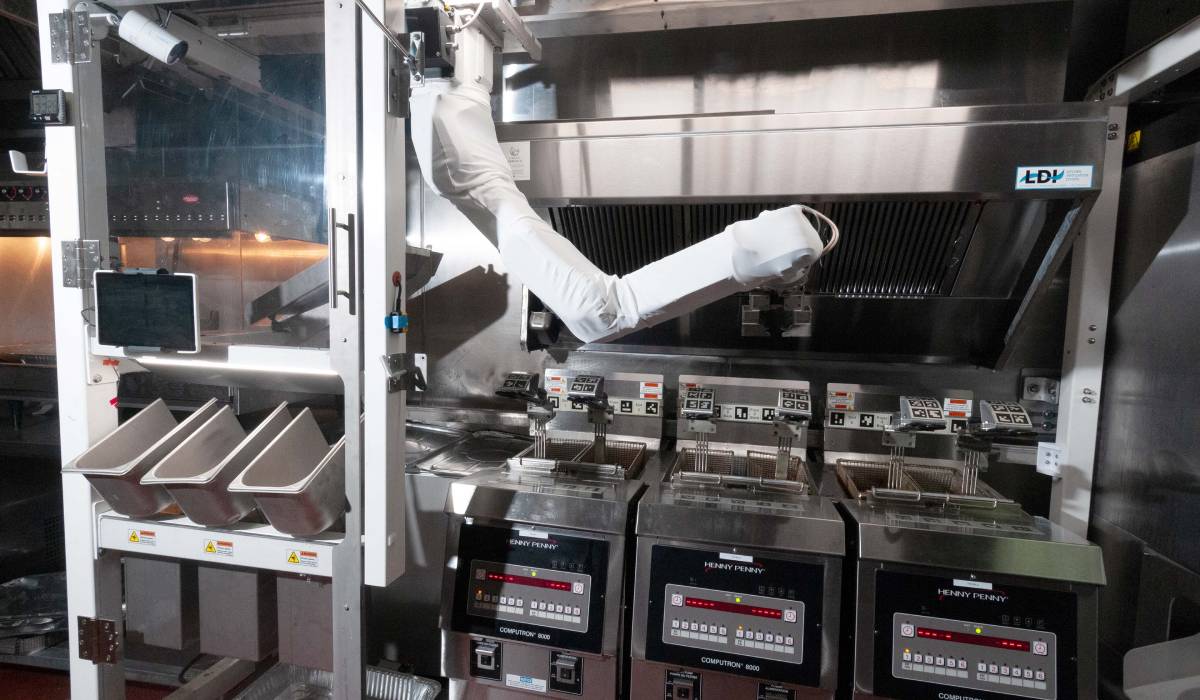You’ve likely heard all about the doom and gloom predictions of crushing labor shortages exacerbated by the ongoing pandemic at restaurants across the nation. Between social distancing, masking guidelines, and health concerns, COVID-19 is largely to blame for the “Great Resignation,” which has affected labor in sectors far beyond food service—from retail to manufacturing, healthcare, and technology.
But this societal shift brought on by the global pandemic isn’t the full story behind the labor woes at fast-food restaurants, where high turnover has always been a chronic problem for owners. The work can be dirty, dangerous, and grueling, with long hours of repetition often the norm. It’s the hardest job to fill and keep filled for restaurant operators.
Accordingly, the turnover rate in food service, always high, reached a whopping 130.7 percent in 2020, compared to a still outlandish 78.9 percent in 2019, according to the Bureau of Labor Statistics.
Without a doubt, the many complications brought on by the pandemic play a continuing role in the dearth of labor. The National Restaurant Association says restaurant industry sales only reached $659 billion in 2020, $240 billion less than expected. They also reported 12.5 million restaurant industry employees at the end of 2020, 3.1 million workers fewer than expected.
Despite the high costs of replacing and training employees, could it be that high turnover is just part of doing business in the restaurant world, with or without a global pandemic? What if there was a better way to make certain aspects of restaurant work more enjoyable—dare I say more innovative for restaurant owners and more rewarding for employees?
A technological “flipping point” for fast food chains has been decades in the making. The pandemic has simply pushed the industry to act now.
As it turns out, very few people want to stand in front of a hot fryer getting splattered with oil all day for minimum wage, whether there’s a raging global health crisis or not. That has left national chains searching for ways to automate and drive efficiency and consistency.
Have you been inside a national fast-food chain restaurant lately? Digital menu boards and glowing touchscreens all seem to point to chains embracing technology, but those are just surface-level solutions that make for a better customer-facing experience at the front of the house. In reality, when it comes to fulfilling the orders that are placed, most kitchens are using the same technology that has been used for the past 30-40 years (think black and white screens with printed tickets)—where quality, consistency, and speed of food preparation suffer on a daily basis. The industry has truly reached a boiling point for a change.
So, what about robots? Well, for one, they happily take up often unsafe, tedious work. Two, they’re very affordable—surprisingly affordable. Three, people really like working with robots since they free them to perform higher-value contributions.
That’s exactly why we’re doing what we do at Miso Robotics. You may have heard about Flippy, our robotic kitchen assistant, which is now pulling shifts at fast-food chains (like White Castle) where it dutifully cooks stacks of sliders and fries for the hungry masses. It’s just one example of the sea change that is rewiring the fast-food industry with artificial intelligence, machine learning, and robotics.
Robots in the kitchen are actually good for the workforce. As we’ve seen in automotive production and more recently, computer programming, these technologies, in fact, increase worker safety and boost human productivity when done right. In fact, the team at White Castle really likes working alongside Flippy—so much so that they rank Flippy and vote it for recognition the same way they do their human colleagues.
Jam-packed with computer vision, thermal cameras, and processors that connect it to the cloud, Flippy can identify objects, monitor cook times, and track incoming burger and fry orders while switching between cooking tools. Robots learn over time, and we anticipate Flippy cooking many more fast-food favorites soon.
The fact is, profits at many food chains have soared during the pandemic, as customers avoided venturing outside and simply ordered food on their favorite app, having it delivered to their front doors. Even with improvements in hiring, training, and pay to lure and keep employees in foodservice, there are certain tasks where automation can really help pick up where shortages exist.
My life revolves around how technology can be applied to do those tedious and dangerous tasks in the kitchen through the fusion of artificial intelligence, robotics, and machine learning. We’ve finally reached the point where this technology is ready to play a much larger role in the future of fast food.
Every day, I receive requests from leaders of national and regional fast-food chains asking how we can help innovate their kitchens. The demand has, quite frankly, been overwhelming, and we’re building products as fast as we can for a hungry industry.
Mike Bell is the CEO of Miso Robotics, setting the overall strategic direction for the company and overseeing the scope of operations. A veteran technology executive and entrepreneur for more than 25 years, he has held C-suite roles at early-stage technology startups including Software.com, Encore and, most recently, Ordermark, where he was COO. Mike’s expertise is in scaling emerging companies and building them into commercially- viable, rapidly-growing organizations. Mike has a degree from University of Iowa.







